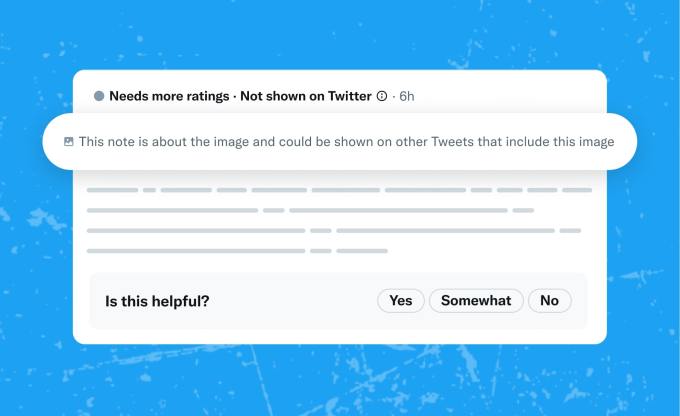Welcome to The Interchange! If you received this in your inbox, thank you for signing up and your vote of confidence. If you’re reading this as a post on our site, sign up here so you can receive it directly in the future. Every week, we’ll take a look at the hottest fintech news of the previous week. This will include everything from funding rounds to trends to an analysis of a particular space to hot takes on a particular company or phenomenon. There’s a lot of fintech news out there and it’s our job to stay on top of it — and make sense of it — so you can stay in the know. — Mary Ann and Christine
Hi, hi. It was an unusually active week in the world of fintech fundraising, as evidenced by the sheer number of startup raises we covered (more on that below). Last week, QED Investors also announced that it had raised $925 million across two new funds to back fintech startups globally — a $650 million early-stage fund and a $275 million growth-stage fund. The venture firm has been around for well over a decade, exclusively investing in companies building financial technology. To dig a little deeper, I caught up with QED managing partner and co-founder Nigel Morris after news of the fund closures came out. Here’s that Q&A (edited for brevity and clarity).
Q&A with Nigel Morris
What do you mean by investing in the “early growth stage”?
A large part of the Growth Fund, approximately two-thirds to three-quarters is earmarked for continuation capital. As a result, this capital comes in when the early-stage fund drops off, typically after the Series A round.
Growth Fund I and Growth Fund II are predominantly intended for Series B and Series C investments to allow us to continue to back our breakthrough companies, while giving us the optionality to invest opportunistically in companies we may have missed the first time around.
What are some recent exits?
QED had five portfolio companies IPO in 2021 — Remitly, AvidXchange, Sofi, Nubank and Flywire. JPMorgan acquired OpenInvest in 2021, too. We did not have any exits in 2022 or so far in 2023, but hopefully there will be more in 2024 as the later-stage thaw continues.
We are spending a lot of time with our later-stage portfolio companies making sure they are ready for a sale or an IPO, and we are supporting our entrepreneurs with opportunistic fundraising for their next round of capital where it makes sense.
What areas of fintech are you particularly bullish on, and why?
Considering our deep Capital One heritage, we have extensive experience as a team in core financial services like credit and payments. We remain particularly bullish on the theme of embedded finance, also businesses that are counter cyclical, which are more important than ever today considering the current macroeconomic environment. Looking farther ahead, we are excited to explore specific use cases around both blockchain technologies and infrastructure and its corresponding rails, and we are also excited by the promise of the next iteration of insurtech and proptech. With our strong heritage in data science, we also believe a lot of the major trends that people are talking about in AI/ML frameworks today are already underfoot in many financial technology companies.
What geographies are you particularly bullish on, and why?
QED is now a global VC and we are particularly excited by the opportunities in emerging markets like LatAm, Africa, and India and Southeast Asia. The potential to build seminal companies in these geographies is incredibly exciting for us because we can democratize access to financial inclusion on a truly massive scale.
While North America and Europe will continue to embrace fintech and digital adoption, the biggest growth in terms of multiples will come from emerging APAC, MENA and LatAm where large numbers of people remain unbanked and underbanked. The potential to build world-class transformational companies in geos such as Singapore, Indonesia, Egypt, Nigeria, Brazil and Mexico and make a noticeable difference in people’s lives is terrific. In these developing markets, QED believes we are in the earliest chapters of fintech’s evolution.
Fintech has taken a big hit in the past year or so. What are your thoughts on that? Was there too much hype?
There was a lot of froth in the market after 15 years of up-and-to-the-right progress. Valuations became unsustainable and peaked at inflated 20x revenue multiples in Q2 2021. As valuations soared and inexpensive capital flowed freely, it became difficult to accurately determine what a company was truly worth, and as a result, the industry overpaid for companies that likely didn’t have the business model or traction to command such a price.
My colleague and co-founder Frank Rotman has likened it to Darwin taking a two-year vacation but now finally returning. Some companies will struggle to raise their next round and some companies will falter. QED remains intensely focused on building lasting, durable businesses that have strong fundamental unit economics and that solve real problems.
How many companies do you plan to invest in out of these new funds, and what is the average check size?
Pacing will be extremely disciplined, but we will be opportunistic where it makes sense. Generally speaking, we anticipate fund deployment to be quite measured across the ecosystem, particularly in comparison to recent years.
We anticipate making approximately 35 to 45 investments out of Fund VIII with average investments of $15 million. We’ll likely make around 20 investments out of Growth II with an average investment size of $15 million. While we prefer to play at the early growth stage, we are…positioned to also create co-investment opportunities for our LPs and to capitalize when the IPO window starts to unfreeze and the M&A activity picks back up. — Mary Ann
Your move, Step
Just when you think you’re the “king of the castle,” someone comes along and challenges you to the throne. Last week, I wrote about Step, the digital banking service geared toward teens and young adults, which announced a 5% rate for its savings accounts.
At the time, I also mentioned that neobanks and other financial organizations are giving traditional banks a run for their money (pun intended), with some being inspired by Apple launching its savings account rate of 4.15% earlier this month.
In talking about Step’s high rate, CJ MacDonald, co-founder and CEO, told me that the company’s goal was always to offer the highest percentage rate among competitors.
Well, the challenger emerging this week is M1, a finance app offering automated investing, borrowing and banking products, which is matching Step with a new M1 High-Yield Savings Account that has a 5% annual percentage yield.
M1 also seems to have similar thinking to Step in working to always have a high savings account rate. In November, it was 4.5%. Like Step and others, you don’t automatically get the 5%; there are some things you have to do, such as have an active M1 Plus membership. M1 said it is offering three months free, a $30 value, so there’s some incentive to try it out. — Christine
TechCrunch (virtually) in Atlanta
On June 7, TechCrunch will host City Spotlight: Atlanta. We have a slate of amazing programming planned, including a fireside chat with Ryan Glover, the co-founder of the fintech Greenwood, as well as a panel that examines the venture ecosystem within the Atlanta region and identifies the best ways to raise and meet with local venture capitalists. But that’s not all. If you are an early-stage Atlanta-based founder, apply to pitch to our panel of guest investors/judges for our live pitching competition; the winner gets a free booth at TechCrunch Disrupt this year to exhibit their company in our startup alley. Register here.
Weekly News
In other fintech-focused fund news, an SEC filing revealed that London-based venture firm Anthemis was seeking to raise $200 million in capital. It apparently had been in the market since last year and has so far secured commitments of just $36.4 million, which leads us to believe that Anthemis is struggling to raise. The firm separately had to scrap plans to raise a SPAC late last month and earlier this year laid off 28% of its staff as part of a “restructuring.” We reached out to Anthemis for comment but did not get a response (usually firms can’t talk about the process of raising funds, so this is not a surprise).
Speaking of Anthemis . . . portfolio company Daylight, a neobank aimed at the LGBTQ+ community, revealed it had shut down. This was not a surprise considering NY Mag’s piece from earlier this year that detailed a lawsuit brought on by three former employees as well as alleged fabrications and inappropriate behavior on the part of CEO and co-founder Rob Curtis. While Curtis interestingly concluded that the startup couldn’t provide services in a way that covered its costs and that was “likely a job for big banks,” some believe that Daylight’s demise could have also been due to a lack of true differentiation. Maybe. But surely that lawsuit — and resulting negative publicity — didn’t help. You can hear Alex Wilhelm and I riff on that topic (and much more!) on Friday’s episode of the Equity Podcast.
As reported by Ingrid Lunden: “Anne Boden nearly lost a grip on Starling Bank years ago when the neobank was in the middle of a coup effort led by its CTO, but now it looks like Boden is doing the walking away. The outspoken founder of Starling Bank — which was last valued at over $3 billion, is profitable and has 3.6 million customers — announced that she would be stepping down as CEO of the company but would remain on the board. The statement was made to coincide with the company posting annual results, which showed a rise in revenue, profits, deposits and the loan book compared to the year before.” Read about why she left here.
Sarah Perez reports: “Amazon One, the retailer’s palm-scanning payment technology, is now gaining new functionality with the addition of age verification services. The company announced that customers using Amazon One devices will be able to buy adult beverages — like beer at a sports event — just by hovering their palm over the Amazon One device.” More here.
As reported by Aisha Malik — more competition in the teen banking space: “Venmo announced that it’s introducing teen accounts, allowing parents and legal guardians to open a Venmo account for their teenagers so they can send and receive money. The account, which has no monthly fees, also comes with a Venmo Teen Debit Card. Each Venmo Teen Account is connected to and managed by a parent’s personal Venmo account, but the teen account has a separate balance from the parent’s account.” More here.
Kruze Consulting looked at data from 160 startups and around $2 billion in cash to find that the percentage of startups with accounts at big banks, like JPMorgan, Morgan Stanley and Bank of America, jumped to 72% in April from 9% in February. The root cause? “The banking landscape after Silicon Valley Bank and First Republic Bank declines has not only impacted where startups bank, but also what accounts they hold it in,” said Healy Jones, vice president at Kruze Consulting, in a written statement provided to TechCrunch. “Recently, we’ve been seeing term sheets that require startups to maintain two banking relationships.” Read more about our coverage of the SVB and FRB collapses.
Daffy.org has launched its open APIs with the goal of helping fintechs “integrate giving into their apps,” they told TechCrunch. The goal is to make it easier for companies and developers to make it easier for their customers to donate cash, stock or crypto “to nearly any U.S. charity.” TechCrunch previously covered Daffy.org here and here.
Ecuadorian fintech Kushki says it is now entering the Mexican market as an acquirer. Its goal is to become “a major player in Mexico without the intermediation or dependence on a bank sponsor.” TechCrunch last covered Kushki when it raised $100 million at a $1.5 billion valuation last June.
For a peek into what led to Better Tomorrow Ventures’ Sheel Mohnot becoming a VC, check out this colorful feature about his life here.

CEO of the British Starling Bank Anne Boden. Image Credits: GEOFF CADDICK/AFP via Getty Images
Other headlines
From Klarna to Sezzle: Ranking of apps looks at whether buy now, pay later is a good idea
UAE Central Bank license enables Checkout.com to offer services to merchants in the Middle East
SpotOn launching restaurant POS lineup
Fundings and M&A
Seen on TechCrunch
Plenty’s new wealth-building app targets couples blending finances
Ballerine brings open source to banks’ risk and identity decision-making
South African challenger bank TymeBank raises $77.8M from Norrsken22 and Blue Earth Capital
Celebrity investors pile into consumer savings startup Checkmate
Episode Six raises $48M to streamline payment processes
Firmbase raises $12M to modernize financial planning for startups
This Stanford grad is taking on pawnshops with a new credit card startup
Nymbus lands $70M to help banks digitally transform
Kapital gets more of its own capital to help LatAm businesses monitor cash flow
OpenFin’s attack on the ‘toggle tax’ in financial apps secures it a $35M Series D round
Onyx Private believes affluent professionals need their own bank, so it’s building one
And elsewhere
Regional bank Fifth Third Bancorp acquires embedded payments firm Rize Money
Kiwi raises $80M in funding
Fintech Ualá scores Mexico bank license with deal approval
We are taking off now to enjoy the long Memorial Day weekend here in the U.S. Here’s hoping that each and every one of you has a restful weekend and fabulous week ahead, wherever you may be located. Thanks again for reading! xoxoxo, Mary Ann and Christine

Image Credits: Bryce Durbin
QED Investors says pace of investing from new funds will be ‘extremely disciplined’ by Christine Hall originally published on TechCrunch
from TechCrunch https://ift.tt/0f9yHoh


























